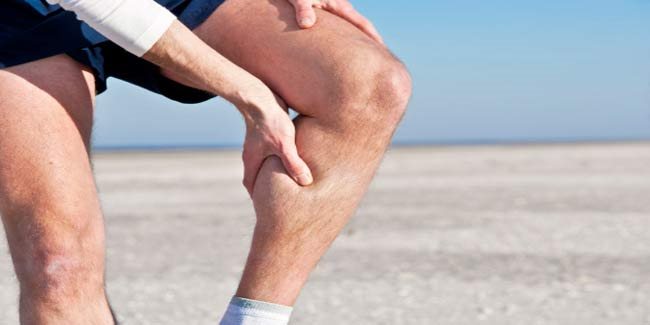What are the symptoms of a pulled calf muscle?
Symptoms of a pulled calf muscle, also known as a calf strain, include:
- Sudden Pain: Sharp or aching pain in the back of the lower leg, often felt during or immediately after physical activity.
- Tenderness: Sensitivity or soreness when touching the affected area.
- Swelling: Mild to moderate swelling around the calf muscle.
- Bruising: Discoloration or bruising may appear on the calf if the muscle strain is severe.
- Stiffness: Difficulty moving the ankle or calf, with stiffness or tightness in the muscle.
- Weakness: Reduced strength or ability to bear weight on the affected leg.
- Cramping: Muscle cramps or spasms in the calf muscle.
The severity of these symptoms can vary depending on the extent of the muscle strain, ranging from mild discomfort to severe pain and functional limitations.
What are the causes of a pulled calf muscle?
A pulled calf muscle, or calf strain, typically results from overstretching or overexertion of the calf muscles. Common causes include:
- Sudden Increase in Activity: Rapidly increasing the intensity or duration of physical activity, especially activities involving running or jumping.
- Improper Warm-Up: Not warming up properly before exercise can increase the risk of muscle strains.
- Muscle Fatigue: Exercising when muscles are tired or overworked, which reduces their ability to absorb impact.
- Poor Flexibility: Tight calf muscles are more prone to injury. Inadequate stretching or flexibility can contribute to strains.
- Inadequate Conditioning: Weak or underconditioned calf muscles are more susceptible to injury during physical activity.
- Improper Technique: Poor form or technique during exercise or sports can strain the calf muscles.
- Previous Injuries: Past injuries to the calf muscle can make it more vulnerable to re-injury.
- Footwear: Wearing inappropriate or worn-out footwear that doesn’t provide adequate support or cushioning.
These factors can contribute to the overstretching or tearing of the calf muscles, leading to a strain.
What is the treatment for a pulled calf muscle?
Treating a pulled calf muscle typically involves several steps to reduce pain, promote healing, and restore function. Here’s a general approach:
- Rest: Avoid activities that stress the injured muscle. Resting allows the muscle to heal without further strain.
- Ice: Apply ice to the affected area for 15-20 minutes every 1-2 hours during the first 48 hours to reduce swelling and numb the pain.
- Compression: Use an elastic bandage or compression wrap to help control swelling. Ensure it’s snug but not so tight that it restricts blood flow.
- Elevation: Keep the injured leg elevated above heart level as much as possible to minimize swelling.
- Pain Relief: Over-the-counter pain relievers like ibuprofen or acetaminophen can help manage pain and inflammation. Follow the dosage instructions on the label.
- Gentle Stretching and Strengthening: Once the acute pain decreases, gentle stretching and strengthening exercises can help restore flexibility and strength. Start with light stretching and gradually increase intensity.
- Heat Therapy: After the first 48 hours, applying heat can help relax tight muscles and improve blood flow. Use a warm compress or heating pad for 15-20 minutes.
- Physical Therapy: If the strain is severe or recovery is slow, a physical therapist can provide guided exercises and treatments to aid in recovery.
- Gradual Return to Activity: Gradually resume physical activities as the muscle heals, starting with low-impact exercises and avoiding sudden, intense movements.
If symptoms persist or worsen, or if there’s significant difficulty moving the calf or severe pain, consult a healthcare provider for further evaluation and treatment.

Leave a Reply
You must be logged in to post a comment.